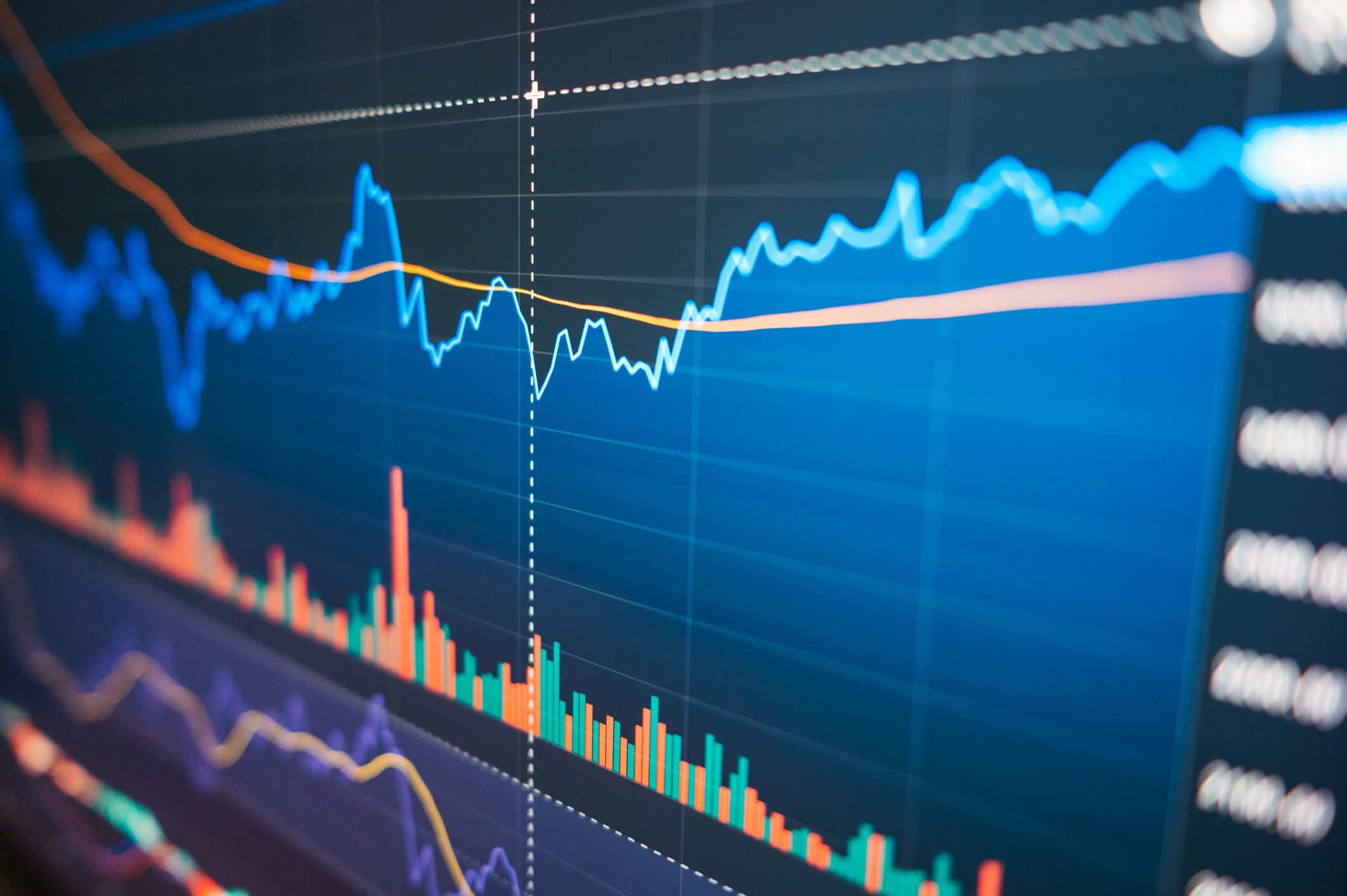5 Blue Chips to Hold if the Rally Fizzles
Shares of these solid companies should hold up well even if the market's gains don't.
It’s okay to feel a little queasy about the 60% rise in Standard & Poor’s 500-stock index since March 9. Sure, it could be just the beginning of a long-term recovery that could bring further gains. On the other hand, it could be yet another instance of over-exuberant investors setting themselves up for a fall.
We’re not going to make that call. Instead, we recommend shoring up your portfolio with stocks that can withstand a reversal of fortune, if it comes to that. We think investors will become much more discriminating from here on out, dumping some of the sketchier companies that led the seven-month rally in favor of stodgy but dependable firms with steady profits and solid balance sheets.
Evidence that it’s time for a turnabout can be found in the grades that S&P gives to companies for qualities such as long-term growth and stability of earnings. Shares of companies with quality grades of C and D advanced an average of 123% and 115%, respectively, this year through September 30. That’s not sustainable. But stocks ranked A+, A, or A -- rose 16%, 9% and 7%, respectively -- well below the market’s overall gain of 19%. Any future upside, in our view, clearly lies with the blue chips.

Sign up for Kiplinger’s Free E-Newsletters
Profit and prosper with the best of expert advice on investing, taxes, retirement, personal finance and more - straight to your e-mail.
Profit and prosper with the best of expert advice - straight to your e-mail.
Below we profile five safe and solid picks that should fare well even if the rally fizzles. S&P gives all of them a top A+ quality rating. One caveat, though: These are low-risk stocks compared with other stocks. But individual stocks are extremely risky on their own because of the chance a company could suffer some catastrophic event.
If you plan to own individual stocks, you should own enough of them so that this risk is spread among at least a dozen companies. Otherwise, look for a mutual fund, such as Dodge & Cox Stock (symbol DODGX) or Fidelity Contrafund (FCNTX), both members of the Kiplinger 25, that focuses on high-quality stocks.
Procter & Gamble (PG) is the type of safe, reliable company that investors flock to in times of uncertainty. Its household brands, including Tide, Crest and Pampers, are always in demand. And with $79 billion in annual sales, P&G has the size and the marketing muscle to keep them on top.
The Cincinnati-based firm has been good to its shareholders, boosting its dividend for 52 straight years. The current dividend rate is $1.76 annually per share. At P&G’s October 8 close of $57.65, the stock yields 3.1% and trades for a reasonable 14 times expected earnings of $4.10 per share for the fiscal year that ends next June. The share price is up 33% since the market’s March 9 close.
PepsiCo (PEP) is another company rich in consumer brands, including Fritos, Tropicana, Quaker Oats and Gatorade. Although it runs a perennial second to Coca-Cola in the race for soft-drink market share, it dominates snack foods, with a 40% share of salty snacks in the U.S. The company is in the process of acquiring its two largest bottlers. The move will allow it to squeeze more profits from its distribution system, although mergers always entail a certain amount of risk.
Still, PepsiCo has a long track record of producing stable earnings growth and has a lot of potential growth in Russia and China, where it plans to invest more than $2 billion over the next four years. At $60.39, the shares are up by a third from their March low but still trade for a reasonable 15 times expected 2010 earnings of $4.11 per share. With an annual dividend of $1.80 per share, the stock yields 3.0%.
ExxonMobil (XOM) neither soars nor crashes with energy prices. Its gargantuan size ($347 billion in revenues last year) and steady cash flow create a smooth ride for shareholders in any environment. The Irving, Tex., giant has paid a dividend for more than 100 years and has increased it each year over the past 27. At $69.05, the annual dividend rate of $1.68 results in a 2.4% yield.
In addition, Exxon has been a steady buyer of its own shares. The share count has fallen by 20% over the past five years, helping to prop up the value of the remaining shares.
Investors have always been willing to pay a premium for ExxonMobil over other energy stocks. Even so, the stock trades for just 12 times expected 2010 earnings of $5.88 per share. The stock is just 8% above its March 9 price.
Johnson & Johnson (JNJ) is a good way to invest in health care without getting burned. It has interests in everything from biotechnology to Band-Aids. This combination of pharmaceutical interests and household products has proved stable in economic downturns. Meanwhile, growth prospects are bright, thanks to an aging population and an explosion in health-care spending.
Investors can take great comfort in J&J’s financial strength. It is one of a handful of companies with a top credit rating of triple-A (ExxonMobil is another). It also spends freely on dividends ($1.96 per share annually) and stock buybacks. The stock, at $60.94, trades for 12 times expected 2010 earnings of $4.89 per share. The shares are 33% above their March low.
The sluggish job-growth and consumer-spending picture seems tailor-made for Wal-Mart Stores (WMT), the go-to retailer for budget-conscious shoppers. But at $49.74, its shares are up just 9% from their February low. Investors may be betting that U.S. shoppers will abandon the low-price leader for fancier retailers in a broad recovery. We don’t think that’s a likely scenario.
In any case, the Bentonville, Ark., giant will see most of its future growth from foreign markets, which account for just 24% of revenue today. Meanwhile, at 13 times expected earnings of $3.91 for the fiscal year that ends in January 2011, the shares are reasonably priced. With an annual dividend yield of $1.09 per share, the stock yields 2.2%.
Get Kiplinger Today newsletter — free
Profit and prosper with the best of Kiplinger's advice on investing, taxes, retirement, personal finance and much more. Delivered daily. Enter your email in the box and click Sign Me Up.
-
 Which Generation Pays the Most Taxes in the US?
Which Generation Pays the Most Taxes in the US?Tax Burden Polls show that most people feel like taxes are unfair. But which age group bears the brunt of the tax burden in the United States?
By Kelley R. Taylor
-
 How Much Will Car Prices Go Up With Tariffs?
How Much Will Car Prices Go Up With Tariffs?Tariffs could drive car prices up even higher, for new and used cars, as well as for American brands.
By Jim Patterson
-
 Why Is Warren Buffett Selling So Much Stock?
Why Is Warren Buffett Selling So Much Stock?Berkshire Hathaway is dumping equities, hoarding cash and making market participants nervous.
By Dan Burrows
-
 If You'd Put $1,000 Into Google Stock 20 Years Ago, Here's What You'd Have Today
If You'd Put $1,000 Into Google Stock 20 Years Ago, Here's What You'd Have TodayGoogle parent Alphabet has been a market-beating machine for ages.
By Dan Burrows
-
 Stock Market Today: Stocks Retreat Ahead of Nvidia Earnings
Stock Market Today: Stocks Retreat Ahead of Nvidia EarningsMarkets lost ground on light volume Wednesday as traders keyed on AI bellwether Nvidia earnings after the close.
By Dan Burrows
-
 Stock Market Today: Stocks Edge Higher With Nvidia Earnings in Focus
Stock Market Today: Stocks Edge Higher With Nvidia Earnings in FocusNvidia stock gained ground ahead of tomorrow's after-the-close earnings event, while Super Micro Computer got hit by a short seller report.
By Karee Venema
-
 Stock Market Today: Dow Hits New Record Closing High
Stock Market Today: Dow Hits New Record Closing HighThe Nasdaq Composite and S&P 500 finished in the red as semiconductor stocks struggled.
By Karee Venema
-
 Stock Market Today: Stocks Pop After Powell's Jackson Hole Speech
Stock Market Today: Stocks Pop After Powell's Jackson Hole SpeechFed Chair Powell's Jackson Hole speech struck a dovish tone which sent stocks soaring Friday.
By Karee Venema
-
 Stock Market Today: Stocks Drop Ahead of Powell's Jackson Hole Speech
Stock Market Today: Stocks Drop Ahead of Powell's Jackson Hole SpeechSentiment turned cautious ahead of Fed Chair Powell's highly anticipated speech Friday at the Jackson Hole Economic Symposium.
By Karee Venema
-
 Stock Market Today: Stocks Rise After Jobs Data Lifts Rate-Cut Odds
Stock Market Today: Stocks Rise After Jobs Data Lifts Rate-Cut OddsPreliminary data from the Bureau of Labor Statistics shows job growth was lower than previously estimated.
By Karee Venema